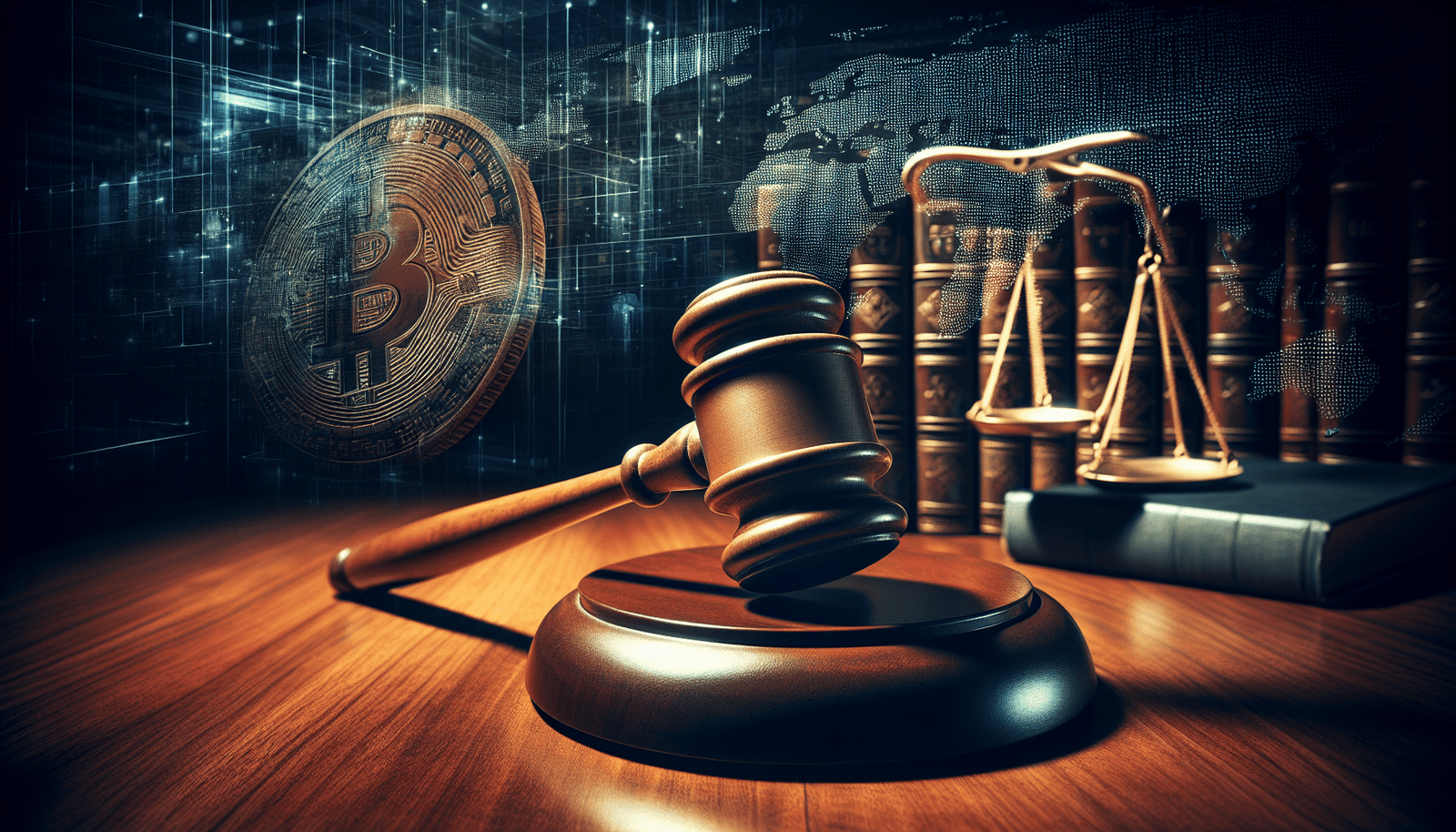Fed Governor Bowman Discusses Potential Rate Hikes Amid High Inflation Concerns
April 8, 2024 | by stockcoin.net

Fed Governor Bowman discusses the possibility of future rate hikes in light of growing concerns over high inflation. In a recent interview, Governor Bowman emphasizes that the current inflationary pressures may require the Federal Reserve to take action to maintain price stability and safeguard the economy. This discussion comes amidst a backdrop of mounting inflation concerns, with consumer prices soaring at the fastest pace in the past decade. With the potential for rate hikes to impact borrowing costs and financial markets, Governor Bowman’s insights provide valuable perspective on the Federal Reserve’s response to a rapidly evolving economic landscape.
Introduction
Overview of Fed Governor Bowman’s perspective
Fed Governor Bowman believes that high inflation concerns must be addressed by implementing future rate hikes. She emphasizes the need to carefully balance the current economic stability while addressing the potential risks associated with inflation. Bowman’s perspective is rooted in the Federal Reserve’s mandate to maintain price stability and maximize employment, and she believes that rate hikes can be an effective tool in achieving these goals.
Importance of addressing high inflation concerns
Addressing high inflation concerns is crucial for maintaining a stable and prosperous economy. High inflation can erode the purchasing power of consumers, reduce business profitability, and disrupt financial markets. By taking necessary measures to counter inflation, such as implementing rate hikes, the Federal Reserve aims to promote price stability and ensure a sustainable economic growth trajectory.
Current Economic Situation
Overview of the current state of the economy
The current state of the economy is marked by a combination of factors. On one hand, there has been significant economic recovery following the pandemic-induced recession, with improving employment numbers and robust consumer spending. On the other hand, inflation rates have been surging, raising concerns about overheating and potential long-term consequences for economic stability.
Explanation of high inflation rates
The recent surge in inflation rates can be attributed to multiple factors. One key driver is the supply chain disruptions caused by the pandemic, which have led to shortages and increased production costs. Additionally, heightened demand for goods and services, coupled with stimulus measures, has contributed to rising prices. Inflation expectations have also played a role, as consumers and businesses anticipate further price increases and adjust their behaviors accordingly.
Impact of inflation on consumers and businesses
High inflation rates have significant implications for both consumers and businesses. Consumers experience a decrease in purchasing power, as the cost of goods and services rises faster than their income. This can lead to a reduction in discretionary spending and lower living standards. For businesses, inflation increases production costs, putting pressure on profit margins. Companies may be forced to raise prices or absorb the costs, potentially impacting competitiveness and hindering economic growth.
Federal Reserve’s Role
Explanation of the Federal Reserve’s authority
The Federal Reserve, often referred to as the central bank of the United States, has the authority to regulate monetary policy. It operates independently from the government but acts in the best interest of economic stability and growth. The Fed’s responsibilities include influencing interest rates, supervising and regulating financial institutions, and providing financial services to the government and depository institutions.
Responsibilities in managing monetary policy
One of the key roles of the Federal Reserve is to manage monetary policy to achieve specific objectives. The Fed aims to promote price stability, defined as keeping inflation in check and avoiding deflationary pressures, while maximizing employment. These objectives are set forth in the dual mandate granted by Congress.
Goals of price stability and maximum employment
The Federal Reserve seeks to maintain price stability by targeting a desired inflation rate over the long term. This goal ensures that the price level remains relatively stable, allowing for predictable consumer and business behavior.
Additionally, the Fed aims to maximize employment by promoting sustainable economic growth. This involves monitoring various labor market indicators and implementing policies that support job creation and reduced unemployment rates.
Implementation of interest rate adjustments
Interest rate adjustments are a key tool the Federal Reserve uses to manage monetary policy. By altering interest rates, the Fed influences borrowing costs for consumers and businesses, which in turn affects spending and investment decisions. When inflation is a concern, the Fed may choose to raise interest rates to cool down the economy and curb excessive price growth.
Inflation Concerns
Discussion of factors contributing to high inflation
Several factors have contributed to the current high inflation rates. Supply chain disruptions, particularly in industries heavily reliant on global trade, have caused disruptions in the availability of goods and increased production costs. The bottlenecks in supply have led to increased prices across various sectors.
Impact of supply chain disruptions on inflation
The pandemic-induced disruptions in global supply chains have created a mismatch between supply and demand. As a result, the scarcity of certain goods has driven prices higher. The rising cost of raw materials, transportation, and labor due to supply chain disruptions has further fueled inflationary pressures.
Effect of increased demand on prices
Increased consumer and business demand, fueled by stimulus measures and pent-up savings, has also contributed to high inflation. As spending rises, there is upward pressure on prices. When demand outpaces supply, businesses can raise prices to maximize profits.
Analysis of rising energy and commodity prices
Rising energy and commodity prices have been significant drivers of inflation. The recent increases in oil and gas prices, coupled with higher costs for raw materials such as lumber and metals, have added to the overall inflationary pressures. These price hikes have ripple effects throughout the economy, impacting production costs and ultimately resulting in higher consumer prices.
Potential Rate Hikes
Explanation of rate hikes as a tool to counter inflation
Rate hikes refer to the increase in interest rates by the Federal Reserve. The intention behind rate hikes is to reduce borrowing and spending, thereby cooling down the economy and curbing inflation. By raising interest rates, the Fed aims to incentivize savings and reduce the consumption of goods and services, which can help alleviate inflationary pressures.
Discussion of previous rate hike approaches
In the past, the Federal Reserve has used rate hikes to counter inflationary pressures. By carefully adjusting interest rates, the Fed tries to strike a balance between controlling inflation and promoting sustainable economic growth. The timing and magnitude of rate hikes are crucial, as they can have significant impacts on various sectors of the economy.
Link between rate hikes and inflation expectations
Rate hikes can influence inflation expectations, which are an essential factor in determining consumer and business behavior. When the Federal Reserve signals its intention to raise interest rates to combat inflation, it signals to the public that measures are being taken to restrain price growth. This can help anchor inflation expectations and prevent a spiral of continuously increasing prices.
Consideration of gradual versus aggressive rate hikes
Deciding on the pace and magnitude of rate hikes involves careful consideration of economic conditions and potential risks. Gradual rate hikes allow the economy time to adjust and businesses to plan for increased borrowing costs. Aggressive rate hikes, on the other hand, can quickly cool down the economy but may also risk creating instability or stalling economic growth. The Federal Reserve must strike a balance between addressing inflation concerns and maintaining stability.
Impact on Financial Markets
Analysis of how rate hikes could affect stock market
Rate hikes can have a significant impact on the stock market. Higher interest rates can make bonds and other fixed-income investments more attractive relative to stocks. This can lead investors to shift their portfolios towards bonds, potentially resulting in a decrease in stock prices. Additionally, higher borrowing costs due to rate hikes can impact corporate profitability, which can also influence stock market performance.
Evaluation of potential impact on bond market
Rate hikes can have a direct impact on bond prices and yields. When interest rates rise, newly issued bonds offer higher yields to attract investors, which can reduce the value of existing bonds with lower yields. Conversely, as rates increase, bond yields also rise, making fixed-income investments more attractive to investors seeking higher returns. These dynamics can cause fluctuations in the bond market.
Effect on borrowing costs for consumers and businesses
Rate hikes affect borrowing costs for consumers and businesses. As interest rates increase, borrowing becomes more expensive, potentially leading to reduced consumer spending and business investments. Higher borrowing costs can affect various sectors, such as housing and manufacturing, which heavily rely on credit availability. The overall impact on the economy will depend on the magnitude and speed of rate hikes.
Consideration of international market reactions
Rate hikes implemented by the Federal Reserve can have ripple effects on international financial markets. As the U.S. dollar strengthens due to higher interest rates, other currencies may depreciate. This can impact trade flows, debt servicing costs, and overall economic stability in other countries. Central banks around the world closely monitor the actions of the Federal Reserve and may adjust their own policies accordingly.
Challenges and Risks
Identification of challenges in timing rate hikes
Timing rate hikes presents several challenges for the Federal Reserve. Implementing rate hikes preemptively carries the risk of stifling economic growth, while delaying rate hikes for too long may lead to heightened inflationary pressures. The Fed must strike a delicate balance and rely on accurate economic data and forecasts to determine the most appropriate timing for rate adjustments.
Discussion of potential negative consequences
Rate hikes, if not executed carefully, can have negative consequences for the economy. Tightening monetary policy too aggressively can risk pushing the economy into a recession. It can increase borrowing costs for businesses and individuals, potentially leading to a slowdown in investments and consumer spending. The Federal Reserve must consider these potential negative consequences when considering rate hikes.
Balancing inflation control with economic growth
Balancing the need to control inflation with maintaining economic growth is a crucial challenge for the Federal Reserve. Rate hikes may be necessary to curb excessive price growth, but they must be implemented in such a way that they do not hinder economic expansion. The Federal Reserve must ensure a delicate balance between these two objectives to promote overall stability and prosperity.
Evaluation of risks associated with rate hikes
Rate hikes carry inherent risks that need to be evaluated carefully. Unpredictable market reactions, potential disruptions in financial markets, and the unintended consequences of tightening monetary policy are all risks associated with rate hikes. The Federal Reserve must analyze these risks and consider appropriate measures to mitigate their impact on the economy and financial stability.
Communication and Transparency
Importance of clear communication from Fed officials
Clear communication from Federal Reserve officials is vital for maintaining market stability and managing expectations. The Fed must effectively convey its policies, objectives, and rationale to the public, financial markets, and policymakers. Transparency and clarity in communication can help reduce uncertainty and guide market behavior.
Effectiveness of transparency in guiding market expectations
Transparency plays a crucial role in guiding market expectations. When the Federal Reserve provides clear information about its policy intentions and the rationale behind its decisions, investors and economic participants can make more informed decisions. This can lead to more efficient market outcomes and better alignment of expectations with the Fed’s objectives.
Consideration of public speeches and statements
Public speeches and statements by Federal Reserve officials are essential tools for communicating policy intentions and guiding market expectations. These platforms allow officials to provide insights into the Fed’s thinking, respond to current economic developments, and address concerns raised by economic actors and the public. The clarity and consistency of these communications are essential for maintaining public trust and confidence.
Role of forward guidance in managing market reactions
Forward guidance refers to the Federal Reserve’s communication of its future policy intentions. By providing clear guidance on future interest rate paths, the Fed attempts to shape market expectations and help reduce uncertainty. Forward guidance can influence borrowing costs, investment decisions, and overall market sentiment. The effective use of forward guidance can help manage market reactions to potential rate hikes.
Public Reaction and Feedback
Overview of public sentiment towards potential rate hikes
Public sentiment towards potential rate hikes may vary. Some individuals may welcome rate hikes as a necessary measure to address inflation concerns and promote economic stability. Others may express concerns about the potential negative impact on borrowing costs and economic growth. Public sentiment can have a significant influence on policymakers’ decisions and the timing of rate hikes.
Evaluation of market reactions and investor sentiment
Market reactions and investor sentiment are critical indicators of the potential impact of rate hikes. Investors closely monitor the Federal Reserve’s actions and statements, adjusting their positions based on expectations about future policy decisions. The market’s response to rate hikes can provide insights into the effectiveness of the Fed’s communication and the overall sentiment towards potential rate hikes.
Consideration of public feedback on inflation concerns
Public feedback on inflation concerns can provide valuable insights into the real-world impacts of rising prices on individuals and businesses. Understanding the public’s experience with inflation can help inform the Federal Reserve’s decisions and ensure that policy measures are appropriate and responsive to the needs of the economy. Public feedback contributes to a more comprehensive understanding of the economic landscape.
Analysis of expert opinions and economic forecasts
Expert opinions and economic forecasts play a crucial role in shaping policy decisions. The Federal Reserve relies on a wide range of economic analysis, including inputs from experts and forecasters. These insights provide valuable perspectives on the potential consequences of rate hikes, inflation expectations, and the overall economic outlook. An analysis of expert opinions and forecasts helps inform the Fed’s decision-making process.
Conclusion
Summary of Fed Governor Bowman’s perspective
Fed Governor Bowman believes that addressing high inflation concerns may necessitate future rate hikes. She emphasizes the importance of carefully balancing the need for inflation control with maintaining economic stability and sustainable growth. Bowman’s perspective is rooted in the Federal Reserve’s mandate to maintain price stability and maximize employment, and she sees rate hikes as a tool to achieve these goals.
Consideration of potential future rate hikes
Considering the current high inflation rates and the Federal Reserve’s mandate, the possibility of future rate hikes cannot be ruled out. The timing and magnitude of these rate hikes will depend on various factors, including economic data, inflation expectations, and market conditions. The Federal Reserve will carefully assess these factors in order to make informed decisions about future rate adjustments.
Importance of balancing inflation concerns and economic stability
Balancing inflation concerns with economic stability is of utmost importance for the Federal Reserve. The central bank aims to control inflation while ensuring sustainable economic growth and maximum employment. The implementation of rate hikes should be done in a way that supports these objectives without jeopardizing the overall wellbeing of the economy. The Federal Reserve’s focus on achieving this balance will be crucial in guiding its future policy decisions.

RELATED POSTS
View all





